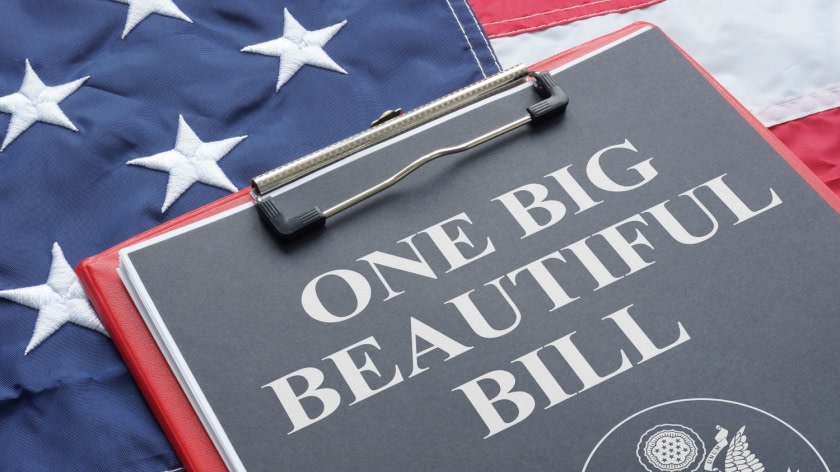US – Big Beautiful Bill adds to soaring debt

Yesterday, the House passed the senate version of the One Big Beautiful Bill Act (OBBBA). The Senate version broadly follows the same lines we’ve described before, but is even bigger. Rather than the initial estimate of $3.3 trillion added to federal debt over the next ten years, the bill now adds about $4.1 trillion to debt as written, $5.5 trillion if made permanent. The latter is a likely outcome, as the OBBBA is itself a law to make the 2017 TCJA tax cuts permanent. That is important, because it means that large parts of this bill should not be viewed as much as fiscal stimulus, but rather a lack of fiscal contraction, providing no further boost to the current economy. Half a trillion of the increase in the Senate version comes from reviving the TCJA business provisions, such as 100% bonus depreciation for equipment and domestic R&E expensing, which were already being phased out since 2022.
What is the direct impact of this?
We’ve described the initial version of the bill before (here in terms of , and in terms of redistribution). The most direct impact is to the debt outlook. The $4.1 trillion comprises about $3.4 trillion in primary deficit increase, and $0.7 trillion in additional interest expense. This ratio becomes worse beyond the 10-year outlook. It increases the deficit by an average of about $600 billion a year, raising it from the current 5-6% to 7-8% over the next ten years. This mainly highlights how the bill took a bad fiscal outlook and made it even worse. The current debt-to-GDP ratio stands at about 100%, and would rise to 117% by 2034 without OBBBA. Now it is likely to rise to 127%, or 130% if permanent. Most of the costs, i.e. tax cuts and spending, come at the beginning of the bill, while the savings (predominantly cuts in benefits) are largely postponed to the next presidential term.
What does this mean for the economic outlook?
In the short run the Senate addition of the revival of the TCJA business provisions might actually give a moderate boost to business investment and the economy. Most other provisions are likely to have a more negative impact. The base extension of the tax cuts benefits everyone, but predominantly high income households, who are not in their spending. But the changes to Medicaid and SNAP (food stamps) wipe out those benefits fully for the bottom 40% of households, and actually lead to lower disposable income for most of those, even compared to a scenario where the TCJA had expired. These households were already struggling with affordability and spent all their income, and will now take a consumption hit.
In a broader sense, the increase in deficits and debt-levels drives up interest rates. Higher debt levels crowd out savings from other investments, they make money more scarce, which therefore becomes more expensive. Moreover, since the government is again spending more then it gets in, the additional money poured in the economy stimulates and is inflationary. Both of these effects drive up interest rates and slow down the economy. The passing of this Bill makes an early Fed cut even less likely.
What about debt sustainability?
The above assumes that markets will continue to react to all of this in an orderly manner. However, this new Bill increases the probability of volatility in bond markets. It adds a significant amount of debt at a time where markets are critically evaluating their view on the US. Government yields previously rose strongly in response to the Liberation Day tariff package, after which the tariffs were quickly put on hold. That was a large sudden shock, achieved through executive order, and could therefore be equally quickly reversed. This is a slow gradual shock, also achieved by a process that cannot as easily be reversed. This is a frog in slowly boiling water, whose leg is tied to the bottom. Once the water starts boiling – and who knows when that might be - it can’t jump out as quickly as it might want to.
